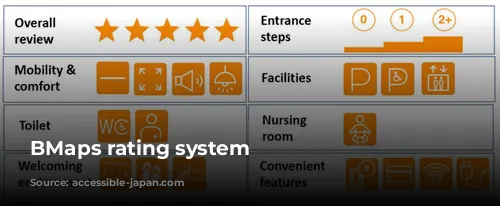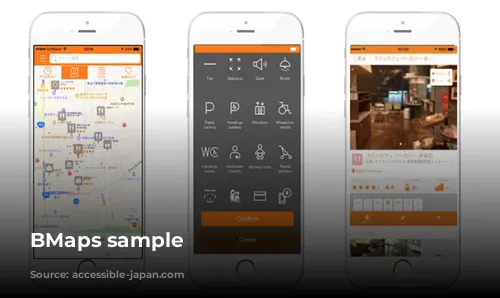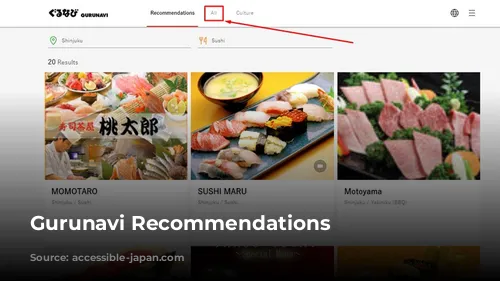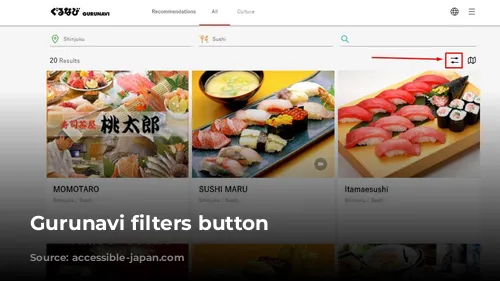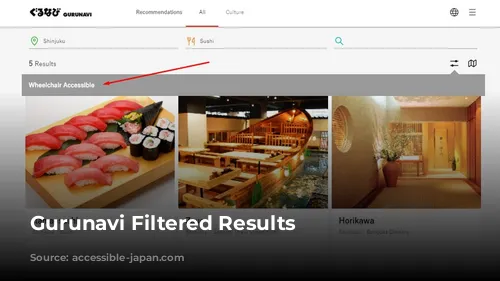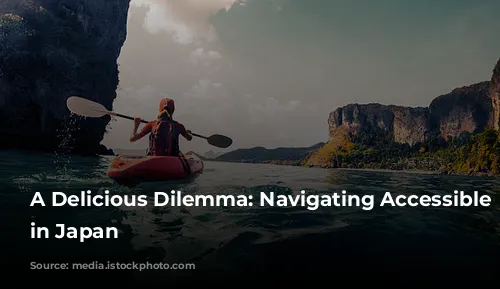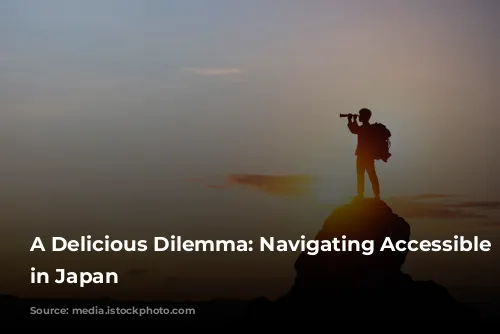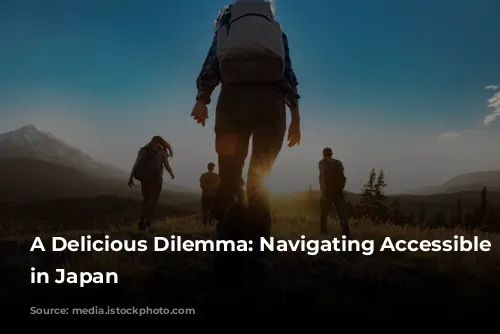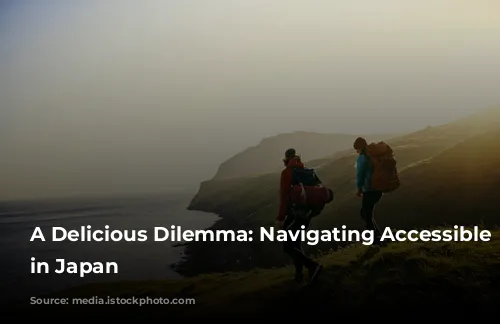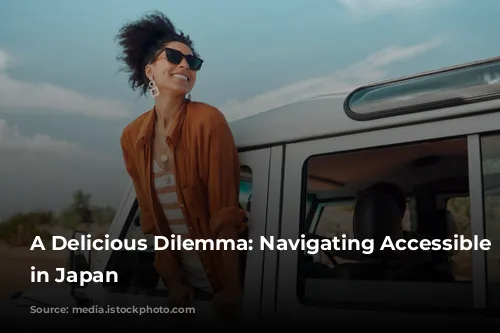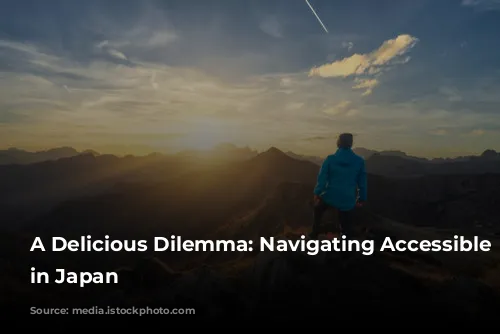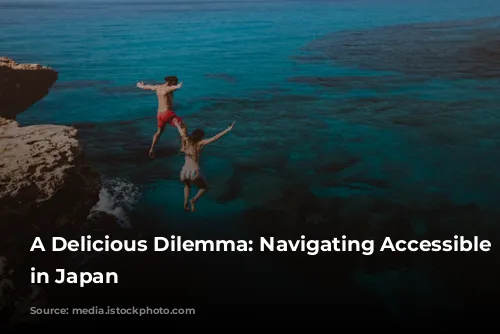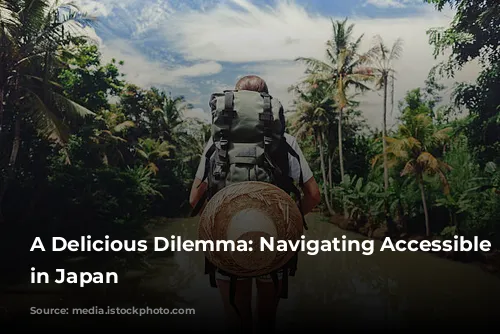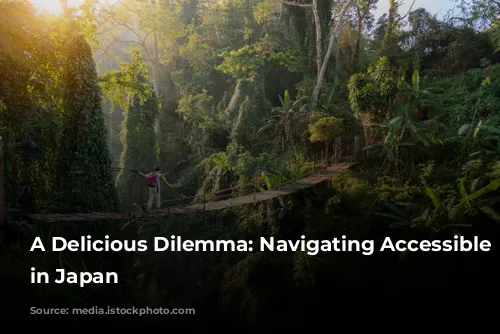Japan, a land of culinary wonders, promises a feast for the senses. From Michelin-starred temples of gastronomy to bustling izakayas buzzing with life, the country offers a diverse range of dining experiences to suit every palate and budget. However, for travelers with disabilities, navigating the culinary scene can pose a challenge.
## Accessing the Flavors of Japan
While Japan’s gastronomic landscape is rich and varied, many traditional establishments present accessibility barriers. Small buildings, narrow doorways, and steps like the genkan, a traditional entrance, can unfortunately exclude individuals with mobility challenges. This is particularly true for traditional Japanese restaurants, a stark contrast to the more accessible Western eateries.
## Finding Your Way: Digital Solutions to Accessibility
Fear not, fellow food lovers! A handful of digital resources can help you discover accessible dining options in Japan.
## Bmaps: A Digital Map for Accessibility
The Bmaps app, developed by Mirairo Inc., is a game-changer for accessibility in Japan. Developed with the input of people with disabilities, Bmaps provides detailed information on the accessibility of various locations, including restaurants, shops, and public facilities.
## Bmaps: A Treasure Trove of Information
Bmaps goes beyond basic accessibility information, offering details that cater to diverse needs. It provides insights into the number of steps at the entrance, the availability of wheelchair-accessible toilets, and other important features like noise levels and lighting.
This information proves invaluable for individuals sensitive to noise, visually impaired individuals seeking calmer environments, and those needing well-lit spaces. Bmaps also offers information on payment options, a valuable tool for everyone, especially foreign tourists and visually impaired individuals who prefer card payments.
## Using Bmaps with Ease
Navigating Bmaps is a breeze. Available for free on PC, iOS, and Android, the app is translated into Japanese, English, and Spanish. Users can click on the map to explore locations, view accessibility features, and even upload photos and leave comments, sharing valuable insights with others.
## Gurunavi: A Culinary Compass
Gurunavi, a popular Japanese website akin to Yelp, offers a vast database of restaurants in both Japanese and English. While it doesn’t explicitly feature accessibility filters, there’s a hidden trick to finding accessible options.
## Gurunavi: Unlocking Accessibility
After searching for a specific restaurant, for example, “shinjuku sushi,” click on the “All” button at the top of the results page. This action unfortunately resets your search, requiring you to select an area and food type again. However, it unlocks the accessibility filter.
## Finding Your Accessible Dining Gem
Once you’ve refined your search, click the filters button at the top right. Choose “Wheelchair Accessible” (along with any other relevant filters) and click “Set.” Voila! The results will display restaurants meeting your accessibility requirements.
## A Note of Caution
Keep in mind that Gurunavi’s accessibility information might not always align perfectly with your individual needs. The website relies on the restaurant owner’s interpretation of accessibility, which may not be as thorough as an evaluation by a person with a disability.
## Enjoying Japan’s Culinary Delights, Accessible and Delicious
Finding accessible restaurants in Japan requires a bit of extra effort, but with the help of Bmaps and Gurunavi, it’s definitely achievable. By embracing these digital resources, you can navigate the world of Japanese cuisine with confidence and delight, ensuring that your culinary journey is accessible and unforgettable.
